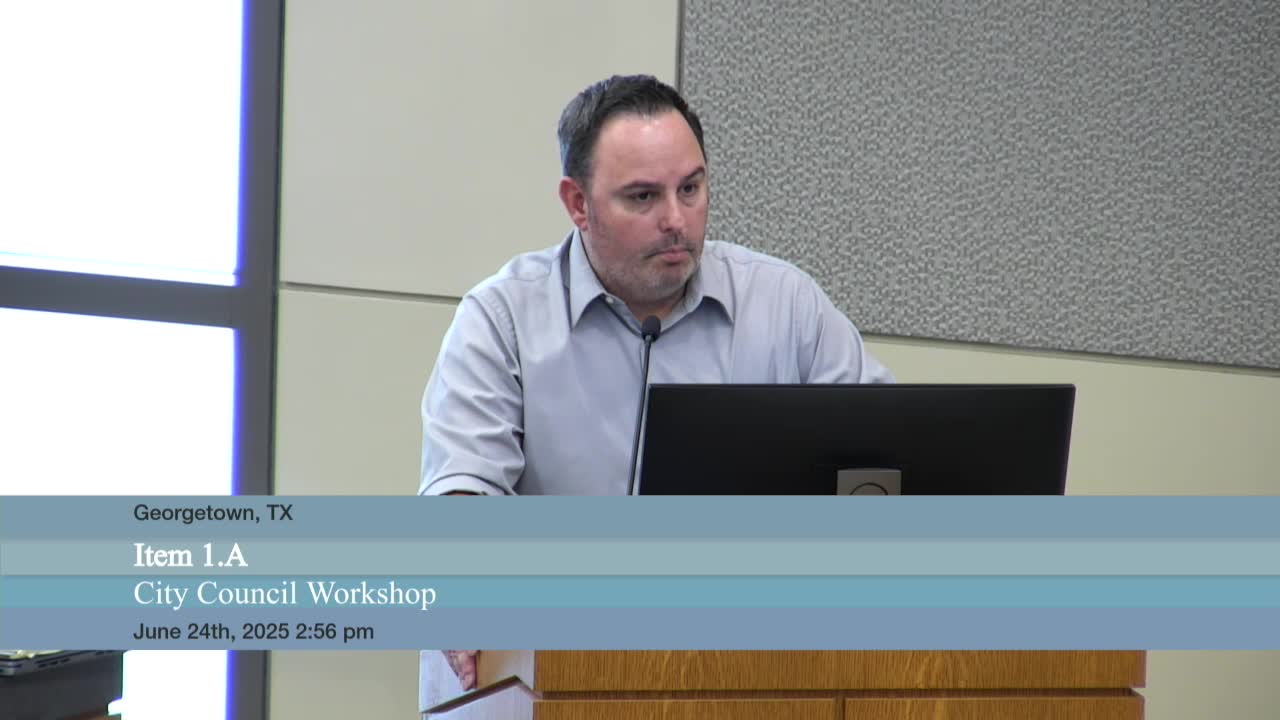Council reviews skyrocketing costs for wastewater treatment and infrastructure projects
June 24, 2025 | Georgetown, Williamson County, Texas
This article was created by AI summarizing key points discussed. AI makes mistakes, so for full details and context, please refer to the video of the full meeting. Please report any errors so we can fix them. Report an error »

In a recent workshop held at Georgetown City Hall, city officials confronted the stark reality of rising project costs that have surged since their last update in 2022. The meeting, attended by members of the committee and council, focused on the urgent need to reassess cost estimates for critical infrastructure projects, particularly in wastewater management.
One of the most striking revelations came from the discussion surrounding the Berry Creek interceptor project. Initially estimated at over $100 million, the final cost came in at approximately $74 million, prompting officials to acknowledge past inaccuracies in their budgeting. “It looks like we're sandbagging,” one committee member remarked, emphasizing the need for more accurate projections moving forward. The previous study had only accounted for about $20 million of the project, highlighting a significant gap in financial planning.
The conversation shifted to the 3 Forks wastewater treatment plant, where initial estimates of around $100 million have ballooned to projections exceeding $300 million for the first phase alone. This dramatic increase reflects broader trends in the industry, where the cost of wastewater treatment has more than doubled over the past decade—from $15 to $35 per gallon.
As the city grapples with these rising costs, officials are also considering the implications for developers and current residents. The discussion underscored a critical question: who will bear the financial burden of these increases? Delaying decisions to avoid “sticker shock” for developers could ultimately lead to higher costs for existing residents, as they may have to subsidize the difference.
With development expected to continue into the coming decades, city leaders are tasked with balancing the needs of new residents and the financial realities facing their current constituents. As Georgetown moves forward, the outcomes of these discussions will shape the city’s infrastructure and financial landscape for years to come.
One of the most striking revelations came from the discussion surrounding the Berry Creek interceptor project. Initially estimated at over $100 million, the final cost came in at approximately $74 million, prompting officials to acknowledge past inaccuracies in their budgeting. “It looks like we're sandbagging,” one committee member remarked, emphasizing the need for more accurate projections moving forward. The previous study had only accounted for about $20 million of the project, highlighting a significant gap in financial planning.
The conversation shifted to the 3 Forks wastewater treatment plant, where initial estimates of around $100 million have ballooned to projections exceeding $300 million for the first phase alone. This dramatic increase reflects broader trends in the industry, where the cost of wastewater treatment has more than doubled over the past decade—from $15 to $35 per gallon.
As the city grapples with these rising costs, officials are also considering the implications for developers and current residents. The discussion underscored a critical question: who will bear the financial burden of these increases? Delaying decisions to avoid “sticker shock” for developers could ultimately lead to higher costs for existing residents, as they may have to subsidize the difference.
With development expected to continue into the coming decades, city leaders are tasked with balancing the needs of new residents and the financial realities facing their current constituents. As Georgetown moves forward, the outcomes of these discussions will shape the city’s infrastructure and financial landscape for years to come.
View full meeting
This article is based on a recent meeting—watch the full video and explore the complete transcript for deeper insights into the discussion.
View full meeting
